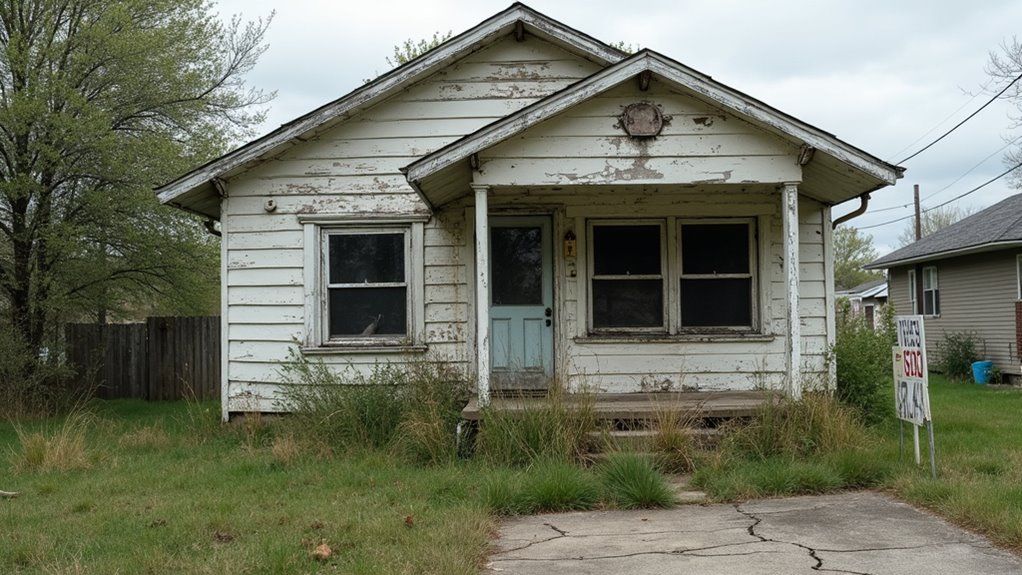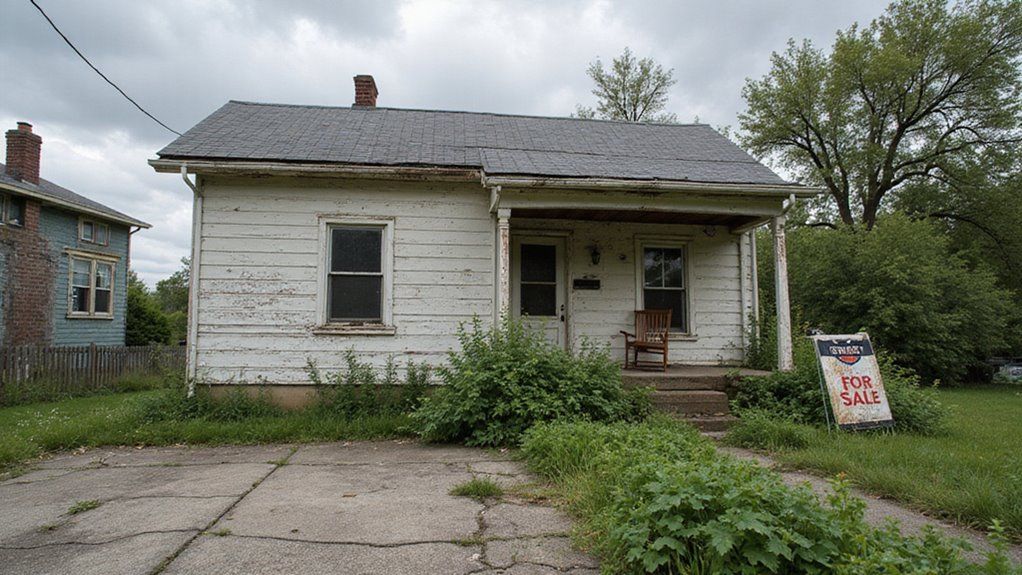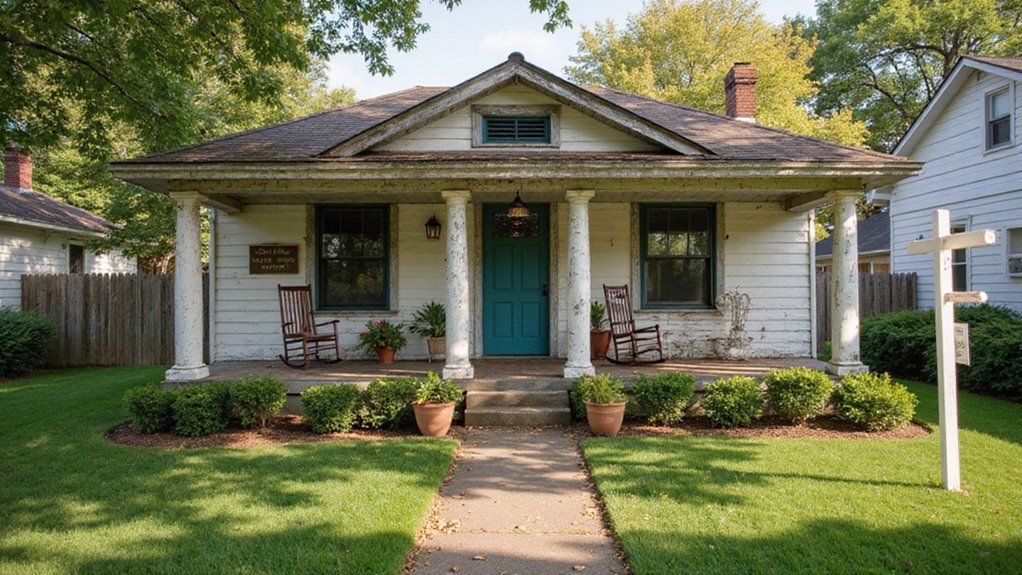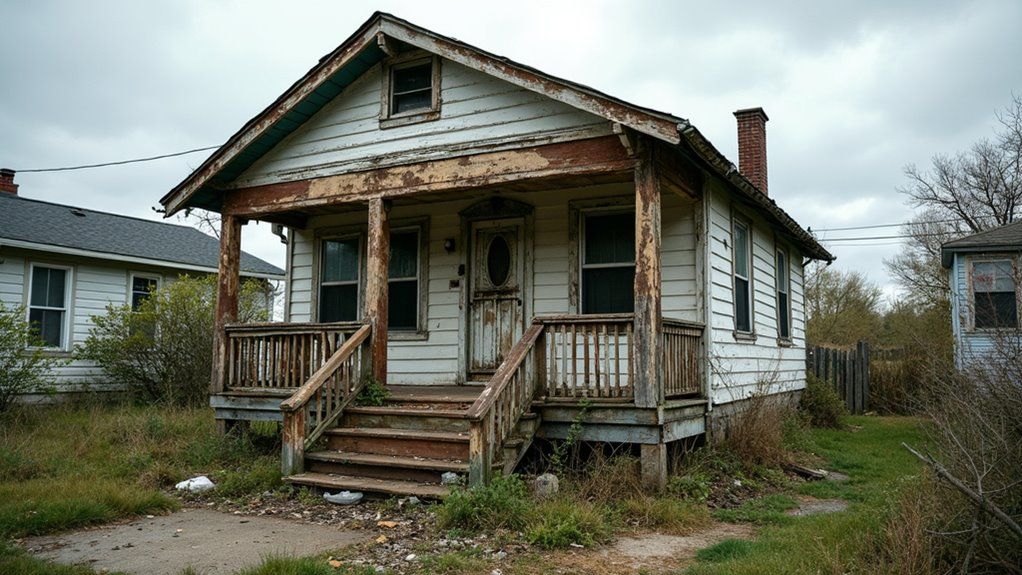Can I Sell My House as Is?

Facing a home filled with issues and needed repairs can feel like dragging a ball and chain. Homeowners in Oklahoma often struggle with whether to invest in costly renovations or sell their property in its current condition.
The stress of inspection reports, repair negotiations, and renovation expenses can quickly become overwhelming. Fortunately, selling “as is” offers a practical escape from this common real estate predicament.
Yes, you can legally sell your house “as is” in Oklahoma without making repairs. However, state law requires you to disclose all known defects to potential buyers. This transparency protects both parties in the transaction.
In this blog I will explore everything related to selling your Oklahoma house “as is” legally and profitably.
Key Takeaways
- Yes, you can sell your house “as is,” meaning no repairs are required before sale.
- Sellers must disclose all known defects to buyers, as required by Oklahoma law.
- “As is” sales often attract cash investors and result in quicker transactions.
- Pricing below market value and honest disclosures can facilitate a successful “as is” sale.
- Proper documentation and transparency protect sellers from legal liabilities during the sale.
What Does Selling a House “As Is” Mean?

Selling a house “as is” means offering your property in its current condition without making any repairs. This approach provides a faster sale for homeowners who need to move quickly. Buyers understand they’re purchasing the property exactly as it stands. Many investors prefer these properties because they can get lower prices.
Oklahoma law requires sellers to disclose all known defects, even in as-is sales. This legal requirement protects both parties from future disputes. Furthermore, your disclosure must be thorough and honest.
As a result, as-is sales attract different buyers than traditional listings. In most cases, expect to receive lower offers than market value.
What Are the Benefits of Selling Your House As Is?

Selling your house as is can speed up the sale and reduce hassle, helping you move on faster.
You avoid costly repairs and complicated renovations, saving time and money.
This approach also eases stress, especially if you’re facing financial difficulties or urgent needs.
Quick and Hassle-Free Sales Process
Selling “as is” cuts your home sale timeline dramatically. You can often close in days rather than months.
No repairs means no waiting for contractors or inspections to complete. This approach eliminates the stress of managing renovation projects or negotiating repair requests.
Furthermore, buyers looking for “as is” properties typically have fewer contingencies. They come prepared with cash offers or pre-approved financing.
Most as-is sales close 50-70% faster than traditional home sales. The paperwork is also simpler without repair addendums.
In essence, you trade potential higher profits for speed and convenience.
No Repair Costs or Renovation Expenses
You’ll save thousands of dollars by selling your house as is. Traditional repairs often cost $5,000-$15,000 before listing. This approach eliminates these upfront expenses completely.
The money stays in your pocket rather than being spent on fixing issues. You can use these savings for your next home purchase or other financial needs. Many sellers find this financial relief especially helpful during transitional periods.
Furthermore, the sale process moves faster without repair delays. Contractors, permits, and material deliveries won’t slow down your timeline.
This streamlined approach benefits both you and potential buyers seeking a straightforward transaction.
Reduced Stress and Paperwork
Selling your house as-is eliminates repair hassles and simplifies the entire process. You can avoid complicated negotiations about fixing issues.
Paperwork becomes more straightforward with standardized disclosure forms that require less detail.
The closing timeline typically shortens to just 10-21 days instead of months. This quick turnaround means less uncertainty and waiting.
Furthermore, you won’t need to invest in upfront repairs or home improvements.
As a result, you can focus on attracting motivated buyers who prefer quick transactions. These buyers typically accept the property’s current condition without demanding changes.
Ideal for Difficult Financial Situations
Selling your house as-is offers immediate relief during financial hardships. You can escape foreclosure without spending money on repairs. The process moves quickly, often closing within days when working with cash buyers.
No repair expenses means you avoid upfront costs that might deepen your financial troubles. This approach works well for inherited properties that need updates.
Moreover, you’ll maintain legal protection by properly disclosing known defects to buyers. Cash investors specifically look for as-is properties and can purchase despite condition issues.
As a result, you can prioritize your family’s stability while reducing stress during challenging times.
What Are the Potential Drawbacks to Consider?

Selling your house as is means you’ll likely get a lower sale price, which can impact your profit.
You’ll also face a limited pool of buyers, mainly cash investors who understand the risks involved.
Plus, even without repairs, you’re still legally required to disclose any known issues, which could complicate your sale.
Lower Sale Price Expectations
Homes sold “as is” typically fetch 10-25% less than renovated properties. This price reduction reflects the repairs and updates buyers will need to make after purchase.
Traditional homebuyers may avoid these properties completely, leaving investors as your main audience.
Your home might also remain on the market longer than renovated properties in your area. When offers do arrive, expect negotiations to center around condition issues and price reductions.
Most buyers will calculate repair costs and subtract this amount from their offers.
The lower price point, however, can attract cash buyers who want quick closings without inspection contingencies.
Limited Buyer Pool
“As is” home sales attract fewer potential buyers than market-ready properties. Cash buyers and investors form your primary market since conventional loan seekers often avoid homes needing repairs.
Most lenders require properties to meet certain condition standards before approving financing. This smaller buyer pool typically results in lower offers.
You can still succeed by marketing directly to investors and highlighting the property’s potential value. Real estate agents specializing in distressed properties can help connect you with the right buyers.
Consider getting repair estimates to show transparency about the home’s condition.
Disclosure Requirements Still Apply
Yes, disclosure requirements remain mandatory when selling property “as is.” You must reveal all known defects to potential buyers.
Sellers who hide material problems risk legal consequences including fraud claims and lawsuits. The law doesn’t excuse you from honesty just because you’re not fixing issues.
Full transparency protects both parties in the transaction. Buyers deserve to know what they’re purchasing.
In most states, concealing problems nullifies the “as is” protection sellers expect. Furthermore, your professional reputation depends on ethical dealings.
Rather than risking legal troubles, maintain complete honesty throughout the sale process. Proper disclosure forms protect you from costly post-sale litigation.
How to Sell Your House As Is for the Best Price?
To get the best price selling your house as-is, you need to set an accurate value and price it competitively.
Focus on strategic marketing that attracts cash buyers and investors, highlighting the property’s capability to stand out.
Make sure you prepare all required disclosures correctly, so buyers trust your honesty and move quickly.
Proper Home Valuation and Pricing Strategy
To value and price a home sold as-is, follow these key steps. Get an independent appraisal from a licensed professional. This provides an objective baseline for your pricing decisions.
Research recent comparable sales within a half-mile radius of your property. Transparency matters when selling as-is properties.
Always disclose all known defects in writing to potential buyers. This builds trust and prevents future legal issues.
Price your as-is home 5-10% below market value to attract serious investors and cash buyers.
The right pricing strategy creates a win-win situation for both seller and buyer. Your goal is finding the sweet spot between fair value and quick sale potential.
Strategic Marketing for As-Is Properties
Target investors and cash buyers through specialized channels. Real estate investment clubs, wholesaler networks, and online investor forums attract ideal buyers for fixer-uppers.
Be transparent about property condition while highlighting profit potential. Most investors seek properties with manageable issues and clear upside.
Market research shows as-is properties sell 30% faster when marketed directly to investors rather than traditional homebuyers.
Create listings that emphasize location benefits, lot value, and renovation potential. In addition, include clear photos that show both challenges and possibilities.
Furthermore, price strategically based on comparable as-is sales rather than renovated properties. This realistic approach builds trust and attracts serious offers quickly.
Highlighting Property Potential
Focus on your property’s strongest features when selling “as is” to maximize price. Good properties attract investors despite flaws when potential value is clear.
Emphasize your large lot dimensions or surplus land that could be developed later.
Location advantages matter tremendously to serious buyers. Point out nearby amenities, school districts, or transportation access that add long-term value.
Additionally, explain any development possibilities or expansion options that increase future worth.
Most properties have at least 3-5 distinct selling points that outweigh current condition issues. Unique architectural elements, special zoning allowances, or uncommon features should be prominently featured.
This strategic highlighting attracts buyers who see beyond cosmetic problems.
Preparing Necessary Disclosures
Oklahoma law requires complete disclosure of all known property defects when selling a home. You must use the official Oklahoma disclosure form to document every issue. Transparency about problems builds buyer trust and prevents future legal headaches.
Most buyers appreciate honesty about existing issues rather than discovering them later. Furthermore, thorough disclosures help attract serious buyers who understand what they’re purchasing.
The law protects sellers who disclose known problems, but you can be liable for undisclosed defects. Consider having a pre-listing inspection to identify issues you might’ve missed. This proactive approach demonstrates good faith and strengthens your negotiating position.
Who Usually Buys Houses As Is?
Most “as is” homes in Tulsa are bought by cash buyers and real estate investors looking for quick deals and rental opportunities.
House flippers also seek these properties to renovate and resell for profit.
If you’re selling “as is,” understanding these buyers can help you target your marketing and close faster.
Cash Home Buyers and Real Estate Investors
Cash investors dominate Tulsa’s “as is” home selling market. They make quick offers without requiring repairs, solving urgent seller problems. These buyers look for properties with potential and offer streamlined transactions.
Most cash buyers complete deals in 7-14 days versus 30-45 days with traditional buyers. Properties typically sell for 50-70% of market value when sold “as is” to investors.
Furthermore, sellers save thousands by avoiding agent commissions and repair costs. The simplified process benefits those facing foreclosure, inheritance situations, or relocation needs. In many cases, investors handle all paperwork and closing logistics.
House Flippers Looking for Opportunities
House flippers target “as is” homes for their profit potential. They buy properties at low prices, renovate them, and sell for higher amounts. The as-is value represents the current condition without any improvements. This strategy creates a win-win situation when transactions move quickly.
However, success requires careful attention to legal requirements. All sellers must disclose known property defects according to state laws. Accurate property valuation also plays a crucial role in the process.
Furthermore, professional inspections can reveal hidden issues before purchase.
With proper research and planning, flippers can transform distressed properties into desirable homes while maintaining ethical standards.
Buyers Seeking Fixer-Upper Projects
Fixer-upper buyers want homes they can improve and personalize. They search for undervalued properties that need work but have potential.
These buyers typically fall into three categories: investors, house flippers, and homeowners seeking customization opportunities.
The main appeal is financial - buying low and adding value through renovations. Many enjoy the creative process of transformation.
Furthermore, these buyers often have construction knowledge or trusted contractor relationships.
Despite challenges, the reward comes from creating exactly what they want. In most cases, patience and vision turn neglected properties into dream homes or profitable investments.
What Legal Requirements Must You Meet?
You must complete the Oklahoma Residential Property Condition Disclosure form when selling “as is” in Tulsa. This legal document reveals all known material defects to potential buyers.
Property sellers can’t hide known problems even in “as is” transactions. The form protects both parties during the sale process.
Buyers get information about property issues before purchase. Failure to disclose known problems can result in lawsuits even after closing.
Furthermore, honest disclosure builds trust with buyers and can prevent future disputes.
How Does the As-Is Home Selling Process Work?
You need to start with assessing your property’s condition and setting an accurate value, then prepare your mandatory disclosures to stay compliant with Oklahoma law.
Next, decide whether to list the home or sell directly to an investor, making sure to clearly state the “as is” status.
Finally, negotiate terms and complete the closing process, knowing full well that full disclosure is required and repairs are your responsibility if issues arise.
Property Assessment and Valuation
Accurate property valuation is essential for selling an “as is” home in Tulsa. Start by documenting all property defects, both visible and hidden. Research comparable local sales to establish a realistic price point.
An independent appraisal provides objective market value and satisfies most buyers’ requirements.
Professional inspections help identify costly issues that might affect your pricing strategy. Consider getting estimates for major repairs to understand your property’s true condition.
This information helps set appropriate expectations with potential buyers. Cash buyers often prefer homes with transparent documentation about condition and value.
Your thorough preparation will attract serious buyers and streamline the selling process.
Disclosure Preparation
You must prepare accurate disclosure documents for “as is” sales in Tulsa. Oklahoma law requires sellers to complete official disclosure forms even in “as is” transactions. Honest reporting of known defects protects you from future legal problems. Complete all sections of the Oklahoma disclosure form thoroughly.
Provide inspection access to interested buyers as part of your ethical obligation. This transparency builds trust with potential purchasers.
Failure to disclose known issues can result in lawsuits even after closing.
Remember that “as is” selling doesn’t exempt you from disclosure responsibilities. Your careful documentation serves both legal protection and buyer fairness.
Through proper preparation, you establish credibility in the marketplace.
Listing or Direct Sale Options
You have two main options when selling an “as is” home in Tulsa. You can list it on the MLS or sell directly to a buyer.
Listing through the MLS will expose your property to investors and cash buyers. Direct sales eliminate the need for repairs and allow for faster closings.
Direct sales typically save you from paying commission fees. This approach can be beneficial if you prioritize helping others.
Always be honest about your home’s condition. You must comply with all disclosure laws regardless of your selling method.
Consider what matters most to you - quick, simple transactions or maximum exposure for potentially better offers.
Negotiation and Closing Considerations
“As is” home deals in Tulsa move quickly and favor cash offers. Buyers typically make lower offers to account for needed repairs. Most waive repair requests but expect full disclosure of known issues.
Negotiations require clarity about property condition from the start. Sellers must reveal all known defects to avoid legal problems later. Oklahoma law requires sellers to disclose material facts about the property.
Buyers should expect limited contingencies in these transactions. Closing happens faster with cash buyers and fewer contingencies. Proper paperwork completion remains essential for both parties.
After closing, buyers accept the property’s current state with no further seller obligations.
Ready to Sell Your House As Is in Tulsa? Contact Tulsa Home Buyers Today
Tulsa Home Buyers will buy your house as-is right now. We purchase properties in any condition without requiring repairs or upgrades.
You must disclose all known major defects under Oklahoma law, even for as-is sales. However, we handle these disclosures seamlessly.
Our process eliminates real estate commissions and closing costs. Most homeowners choose us because of our fast closings and straightforward approach.
After accepting our offer, you can have cash in hand within days. Furthermore, we manage all paperwork to make selling simple and stress-free.
Frequently Asked Questions
Can I Sell an “As Is” House Without Disclosing Defects?
You can’t sell an “as is” house without disclosing known defects. Oklahoma law requires full disclosure of material issues, even in “as is” sales. Failing to do so risks legal trouble and possible lawsuits. Be honest, protect yourself, serve buyers.
Are There Specific Forms Required for “As Is” Disclosures in Oklahoma?
Envision holding a crucial map—Oklahoma requires you to fill out the Residential Property Condition Disclosure form, a standard document that reveals property defects. You must complete and submit this official form to comply legally.
How Do I Handle Multiple Offers on an “As Is” Property?
You should promptly review all offers, prioritize transparency, and communicate clearly with buyers about the property’s condition. Encourage earnestness, set deadlines, and consider negotiating terms that respect legal disclosure requirements and protect both parties.
What Are the Consequences of Failing to Disclose Known Issues?
Failing to disclose known issues is like hiding a leak; it can flood your reputation and lead to lawsuits. Oklahoma law mandates disclosures; ignoring this risks legal trouble, financial penalties, and damaging trust with buyers. Act responsibly to protect yourself.
Can I Sell an “As Is” House to a Family Member?
Yes, you can sell an “as is” house to a family member, but you must still disclose all known defects honestly under Oklahoma law. Failing to do so risks legal trouble, even in family transactions.
This is paragraph text. Click it or hit the Manage Text button to change the font, color, size, format, and more. To set up site-wide paragrapTulsa Home Buyers • October 2, 2025h and title styles, go to Site Theme.
Ready to work with Tulsa Home Buyers?
Let's connect! We’re here to help.
Send us a message and we’ll be in touch.
Or give us a call today at 111-222-3333


